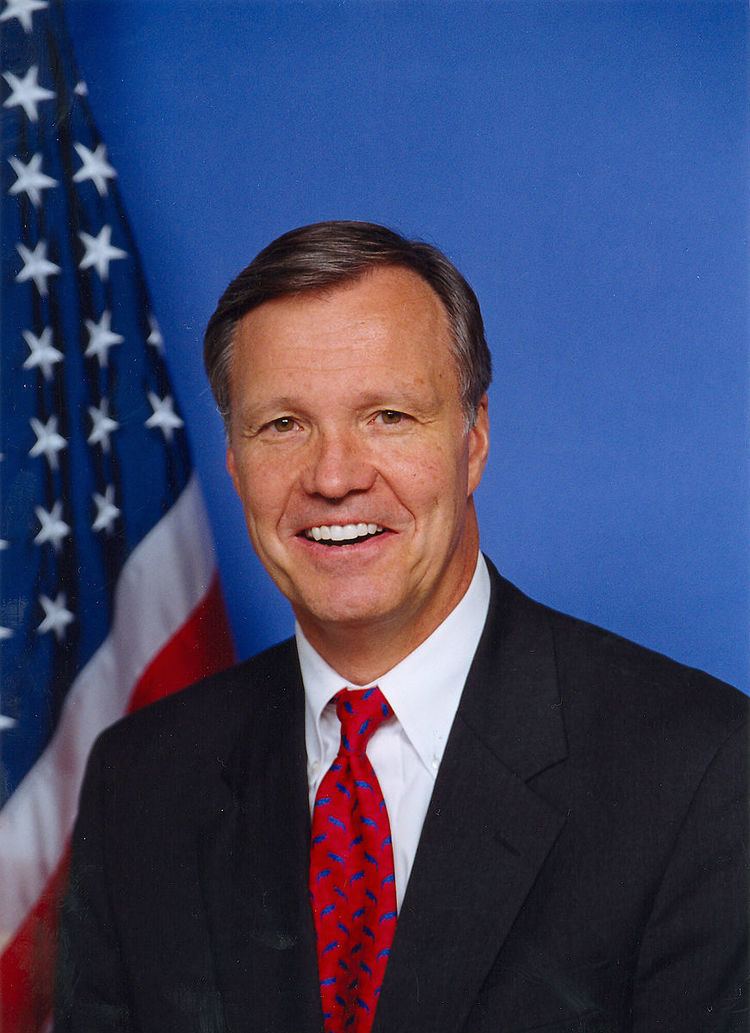 | ||
The Report of the Select Committee on U.S. National Security and Military/Commercial Concerns with the People's Republic of China, commonly known as the Cox Report after Representative Christopher Cox, is a classified U.S. government document reporting on the People's Republic of China's covert operations within the United States during the 1980s and 1990s.
Contents
Committee created by the U.S. House of Representatives
The report was the work product of the Select Committee on U.S. National Security and Military/Commercial Concerns with the People's Republic of China. This special committee, created by a 409–10 vote of the U.S. House of Representatives on June 18, 1998, was tasked with the responsibility of investigating whether technology or information was transferred to the People's Republic of China that may have contributed to the enhancement of the nuclear-armed intercontinental ballistic missiles or to the manufacture of weapons of mass destruction.
A similar investigation had already begun in the U.S. Senate under the leadership of Senator Fred Thompson (Republican-Tennessee). Thompson had opened his hearings on China's influence in America's 1996 presidential and congressional elections 11 months earlier (on July 8, 1997).
The Chairman of the Committee was Republican Rep. Christopher Cox of California, whose name became synonymous with the committee's final report. Four other Republicans and Democrats served on the panel, including Representative Norm Dicks, who served as the ranking Democratic member. The committee's final report was approved unanimously by all 9 members. The redacted version of the report was released to the public May 25, 1999.
Major allegations
The Cox Report contained five major allegations about China and nuclear weapons.
The Chinese government called all allegations "groundless".
While several groups, including the People's Republic of China, contend that the Report is overstated or inaccurate, its authors and supporters maintain that its gist is undeniable. The report's basic findings were as follows, quoted from the above document's opening summary:
The People's Republic of China (PRC) has stolen design information on the United States' most advanced thermonuclear weapons. The Select Committee judges that the PRC's next generation of thermonuclear weapons, currently under development, will exploit elements of stolen U.S. design information. PRC penetration of our national nuclear weapons laboratories spans at least the past several decades and almost certainly continues today.
The PRC has stolen or otherwise illegally obtained U.S. missile and space technology that improves PRC military and intelligence capabilities.
China's response
In response, the PRC has maintained that its nuclear technology was indigenously developed and was not the result of espionage.
Congress' response
The Cox Report's release prompted major legislative and administrative reforms. More than two dozen of the Select Committee's recommendations were enacted into law, including the creation of a new National Nuclear Security Administration to take over the nuclear weapons security responsibilities of the United States Department of Energy. At the same time, no person has ever been convicted of providing nuclear information to the PRC, and the one case that was brought in connection to these charges, that of Wen Ho Lee, fell apart.
Related prosecutions
Two of the U.S. companies named in the report – Loral Space and Communications Corp. and Hughes Electronics Corp. – were later successfully prosecuted by the federal government for violations of U.S. export control law, resulting in the two largest fines in the history of the Arms Export Control Act. Loral paid a $14 million fine in 2002, and Hughes paid a $32 million fine in 2003.
Criticism
The report inflated the SLBM JL-2's range, classifying it 12,000 km rather than the conventional 8,000 km figure used within the intelligence community. Using this inflated figure, the report went on to speculate on how the PLA could change its basic nuclear policy and doctrine. Joseph Cirincione, a noted expert in the area of non-proliferation, has called the report a "propaganda piece."
Damage assessment
In response to the allegations contained in the report, the CIA appointed retired U.S. Navy Admiral David Jeremiah to review and assess the report's findings. In April 1999, Admiral Jeremiah released a report backing up the Cox Report's main allegation that stolen information had been used to develop or modernize Chinese missiles and/or warheads.
U.S. complicity
Jonathan D. Pollack, an expert on Chinese technological and military development, criticized the report for failing to disclose the context in which U.S.-Sino relations dating back to the 1970s had fostered the enhancement of Chinese power as a counterbalance to the Soviet Union. Thus the environment in which these illegal transfers of technology took place may have been taking place in a relaxed or even complicit environment.
W-70 & W-88 usefulness
Richard L. Garwin, a former U.S. weapons designer, remarked that stolen information regarding the W-70 and W-88 warhead would not appear to directly impair U.S. national security since to develop weapons based on this technology would require a massive investment in resources and not be in their best strategic interests with regard to their nuclear program.
CISAC report
In December 1999, a group of physicists and other scholars from Harvard, Stanford, and Lawrence Livermore National Laboratory released an assessment of the Cox Report that published by the Stanford University Center for International Security and Cooperation. The review refuted all five major conclusions of the report.
